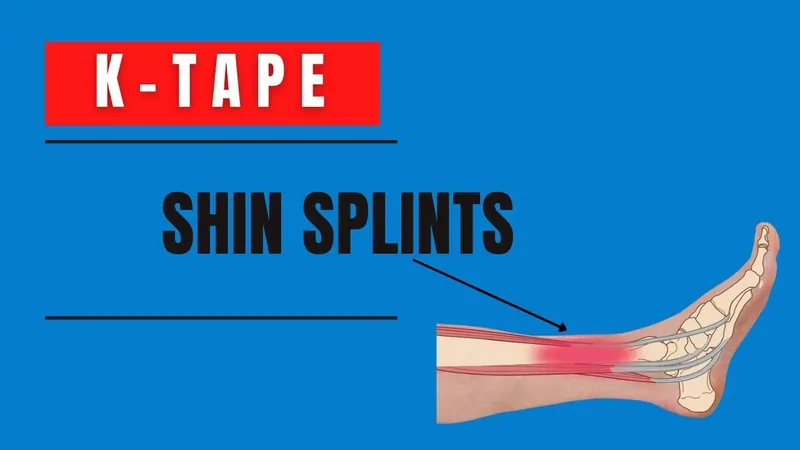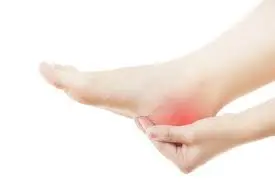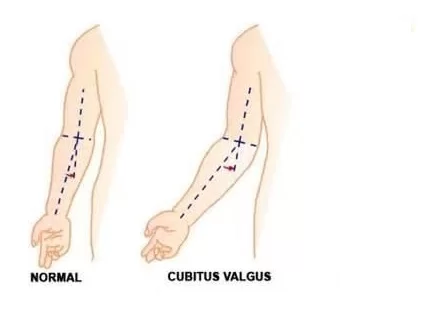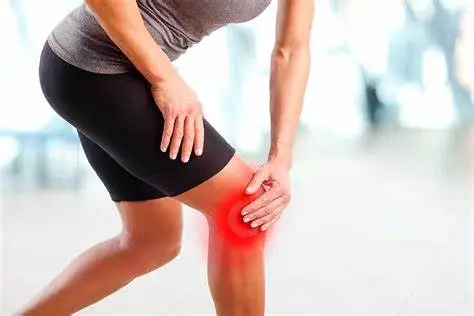Kinesiology Tape for Shin Splints
Kinesiology therapeutic (KT) tape can assist prevent and treat shin splints. KT tape may even help stabilize the muscle near the shin and enhance blood flow. which may support boosting circulation and reducing pain. You can use KT tape in meeting with other healing modalities.
The condition known as medial tibial stress syndrome, or shin splints, is brought on by inflammation of the tendons, muscles, and bones that surround the shinbones. You may feel discomfort and soreness where the muscles attach to the bone along the front or inner edge of your shinbone, or tibia. The pain could be throbbing, dull, or sharp.
Introduction
Pain in the front of the lower legs, or shins, is referred to as shin splints. This pain occurs when the muscles, tendons, and tissue around your shin bone (tibia) become inflamed. Because they repeatedly strain their shin bones, muscles, and connective tissues, athletes often get shin pain.
Shin splint usually happens due to repetitive activities, and lack of variation in your fitness routine. Athletes who participate in high-intensity sports involving running and jumping frequently develop shin splints, particularly if those activities are performed on hard surfaces.
Another risk factor for shin splints is having stiff arches and flat feet. Resuming your workouts after a period of inactivity or increasing their frequency or intensity can also be beneficial.
Physiological effects of Kinesio tape:
- When used properly, the tape can improve performance, prevent injuries, promote healthy circulation and healing, retrain the neuromuscular system, and allow for a normal range of motion.
- Study shows that KT tape may assist in enhancing function in people with shin splints. A small 2018 study found that KT tape was effective in decreasing pain and improving hop distance in people with hyperpronation. The taping method was more useful than standard orthotics.
- Kinesiology tape may enhance circulation and muscle relaxation in the involved area, which helps relieve pain and discomfort. It may also help the involved area and relieve pressure and tension on the muscles. Using tape may also limit unwanted motion, making you less likely to move in ways that lead to injury. Understand that rest is the most important aspect of shin splint healing. Limit your training to give muscles the chance to recover. Choose low-impact exercises if you don’t want to take a complete break from the activity.
Taping instructions
For full effectiveness, you must use appropriate taping techniques. If you need assistance, consult a professional and carefully follow these instructions.
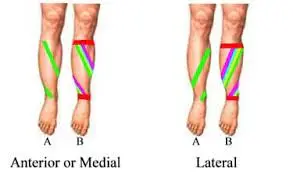
Make sure the tape is rigid but not excessively constrictive when taping. To support the tape adhering to your skin, shave the affected area. This will also make it less painful to pull the tape. If you are prone to skin allergies, do a skin patch examination before use.
Other methods to tape your shins for support include:
Anterior
- Position the leg at a 45-degree angle.
- Begin at the front of the ankle.
- Cover the tape around the exterior of the ankle up toward the internal calf at a 45-degree angle.
- Then pull the tape across to the interior of the leg.
- Do this 4 to 5 times.
- Attach the tape at the top and bottom.
Posterior
- Place the foot at a 45-degree angle.
- Attach the tape a few inches below the interior of the ankle.
- Pull the tape upward along the leg’s inside.
- Put another piece of tape closer to the heel.
- At an angle that curves in the direction of the calf, pull up the tape.
- Over the heel, attach a second piece of tape.
- Pull the tape upward along the leg’s back.
- Over the heel, place one more piece of tape.
- Curl the tape so that it runs along the front of the shin after pulling it across to the top of the foot.
- Put another piece of tape an inch below the last piece of tape.
- Curve it to run along the front of the shin and pull it across to the top of the foot as well.
- At the top and bottom, firmly attach the tape.
Lateral
- Place the foot at a 45-degree angle.
- Begin at the inside front of the ankle and cover the tape around the back of the ankle.
- At a 45-degree angle, pull the tape up towards the outer calf and shin.
- Do this four times.
- Attach the tape at the top and bottom.
To support arches
- Place your foot at a 45-degree angle.
- Place a 1/2-inch piece of felt along the longitudinal arch of your leg.
- Use pre-wrap to position the felt.
- put strips of tape around your foot.
- Simultaneously, pull up gently on your arch.
- Apply tape to your ball of foot.
- Begin at the top of your foot and wrap the exterior under your foot and up and across your arch.
- Do this three to four times.
Drawbacks of Kinesio tape:
In these situations, removing the K-tape could be harmful if you have easily bruised, torn, or abrasive skin. Lymph node removal: If you had lymph nodes removed, covering the surgical site with K-tape may result in the accumulation of lymph fluid and the development of lymphedema (tissue swelling caused by an excess of lymph fluid).
Tips to prevent shin splint:
To prevent injury, it is perfect to treat shin splints as soon as they grow. Here are a few tips to help in a fast recovery:
- Rest. Take as much time to rest as possible. Once you return to the exercise, start gradually. Slowly improve the intensity and duration of your activities. Cut back or take a break if your signs return.
- Choose the correct footwear. Wear well-cushioned shoes that deliver support and shock absorption. Replace your footwear every 3 to 7 months or after running 300 to 500 miles.
- Do exercises and stretches. This aids in encouraging recovery and preventing future injury. Since shin splints can be related to other imbalances in your body, do stretches and movements that target your entire body. This helps to improve muscle strength, range of movement, and flexibility.
- Do self-massage. You can gently apply pressure to the muscles of your lower legs and feet by using your hands, a foam roller, or a massage roller stick. This assists relieve tension in your lower body, increases circulation, and enhances mobility. Avoid placing pressure directly on the shinbone.
- Run on softer surfaces. Opt to run or exercise on grass, a track, or a treadmill to relieve the effect on your shins. Avoid pavement and tile ground as well as hills, as they can worsen symptoms.
- Hot and cold therapy. Use a sauna or steam room to reduce muscular tension. Or take a hot shower or bath. To reduce pain and swelling, ice for 10 to 20 minutes after training.
- Do low-impact activities. Balance intense activities by cross-training with more gentle forms of exercise, especially during recovery. This includes elliptical exercise, swimming, and cycling.
FAQ
Does KT tape useful for shin splints?
While slowly growing your training volume, wearing the right footwear, and paying attention to pronation may all help to lower your risk for the condition, KT tape may also help to control aches associated with shin splints.
What are the drawbacks of kinesio tape?
In such cases, K-tape may induce injury when released if your skin is prone to tears, abrasions, and easy bruising. Lymph node removal: If you’ve had lymph nodes released, putting K-tape over the surgical site can cause lymph fluid to build up, showing lymphedema (tissue swelling due to lymph fluid overload).
Can you fully heal from shin splints?
Shin splints are a very typical overuse injury. With rest and ice, most individuals regain from shin splints without any long-term health issues. However, if left untreated, shin splints do have the possibility to develop into a tibial stress fracture.
Should I sleep with KT tape?
Kinesiology tape is a non-invasive, drug-free approach that therapists use to relieve muscle pain and relax a patient’s body. You can sleep and shower with kinesiology tape on, and it does not control your training because it closely matches the elasticity of your skin.
What are Kinesio tape’s five primary physiological effects?
When applied, the tape can re-educate the neuromuscular system, relieve pain, improve performance, control injury, and promote good circulation and recovery while allowing for normal range of movement.
References
- Hansaplast. (n.d.-a). header-shin-splints. https://www.elastoplast.com.au/strapping-and-injuries/injury-management-and-prevention/taping-for-shin-splints
- THYSOL Australia. (2022, November 30). Shin splints – Kinesiology tape | THYSOL Australia. https://www.thysol.com.au/kinesiology-tape-applications/shin-splints/
- Carter, K. (2024, February 6). Step-by-step instructions on how to use KT Tape for shin splints. Runner’s World. https://www.runnersworld.com/uk/health/injury/a46650026/kt-tape-shin-splints-treatment/
- THYSOL Australia. (2022b, November 30). Shin splints – Kinesiology tape | THYSOL Australia. https://www.thysol.com.au/kinesiology-tape-applications/shin-splints/
- Gash, C. (2020, May 1). How to fix shin splints using KT tape and ice massage. Recoup Fitness. https://recoupfitness.com/blogs/news/fix-shin-splints-ice-massage-kt-tape

